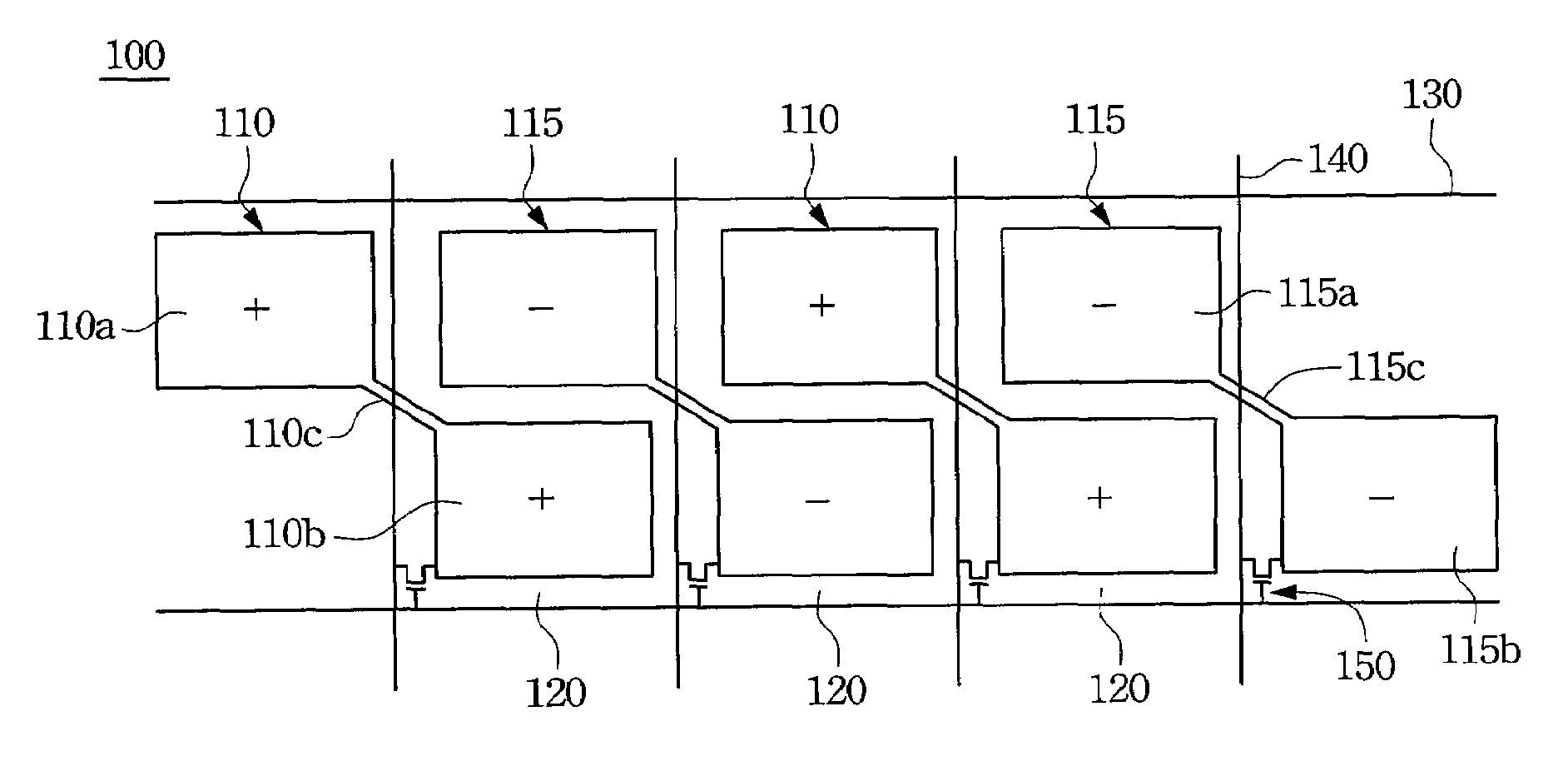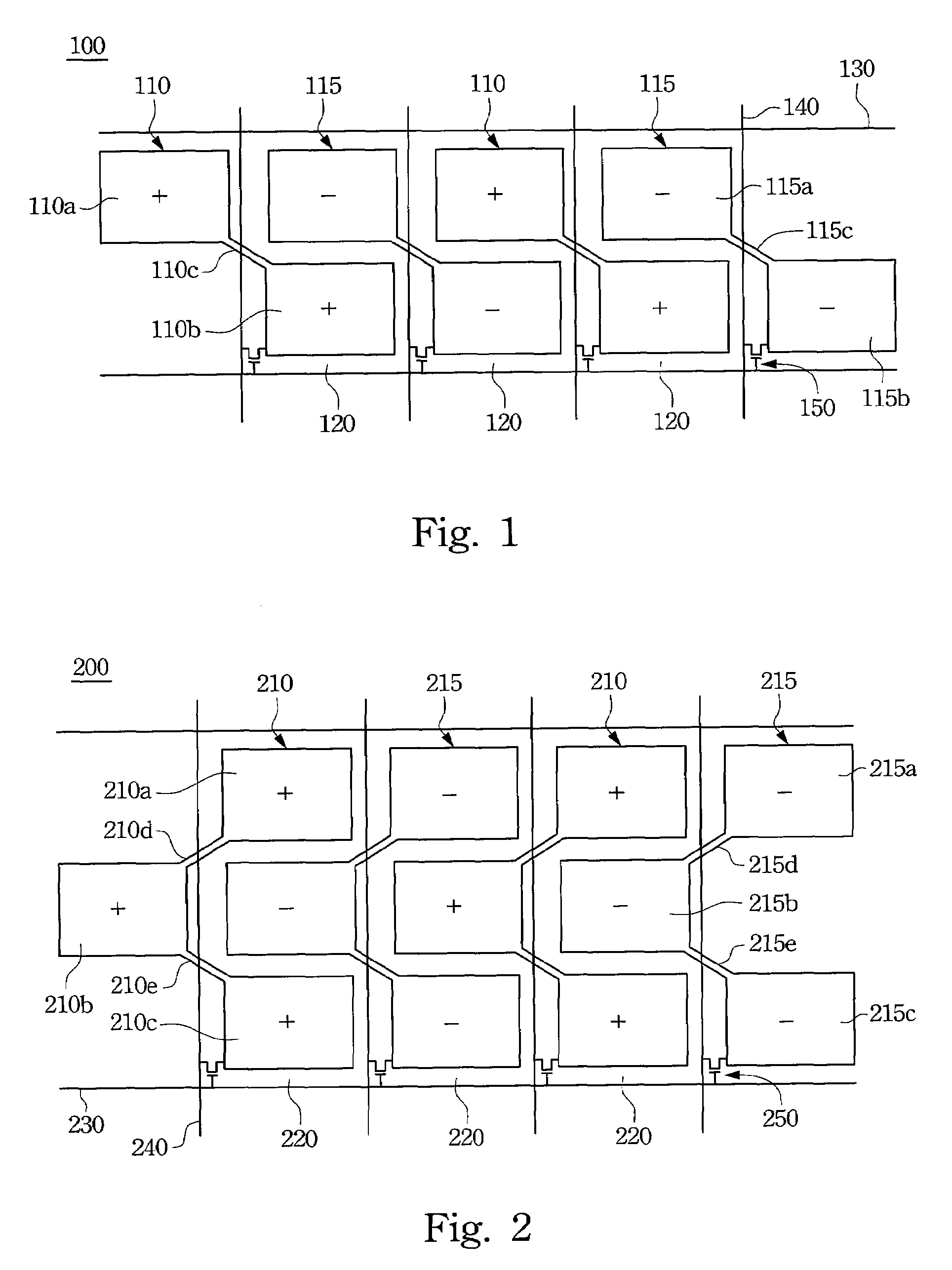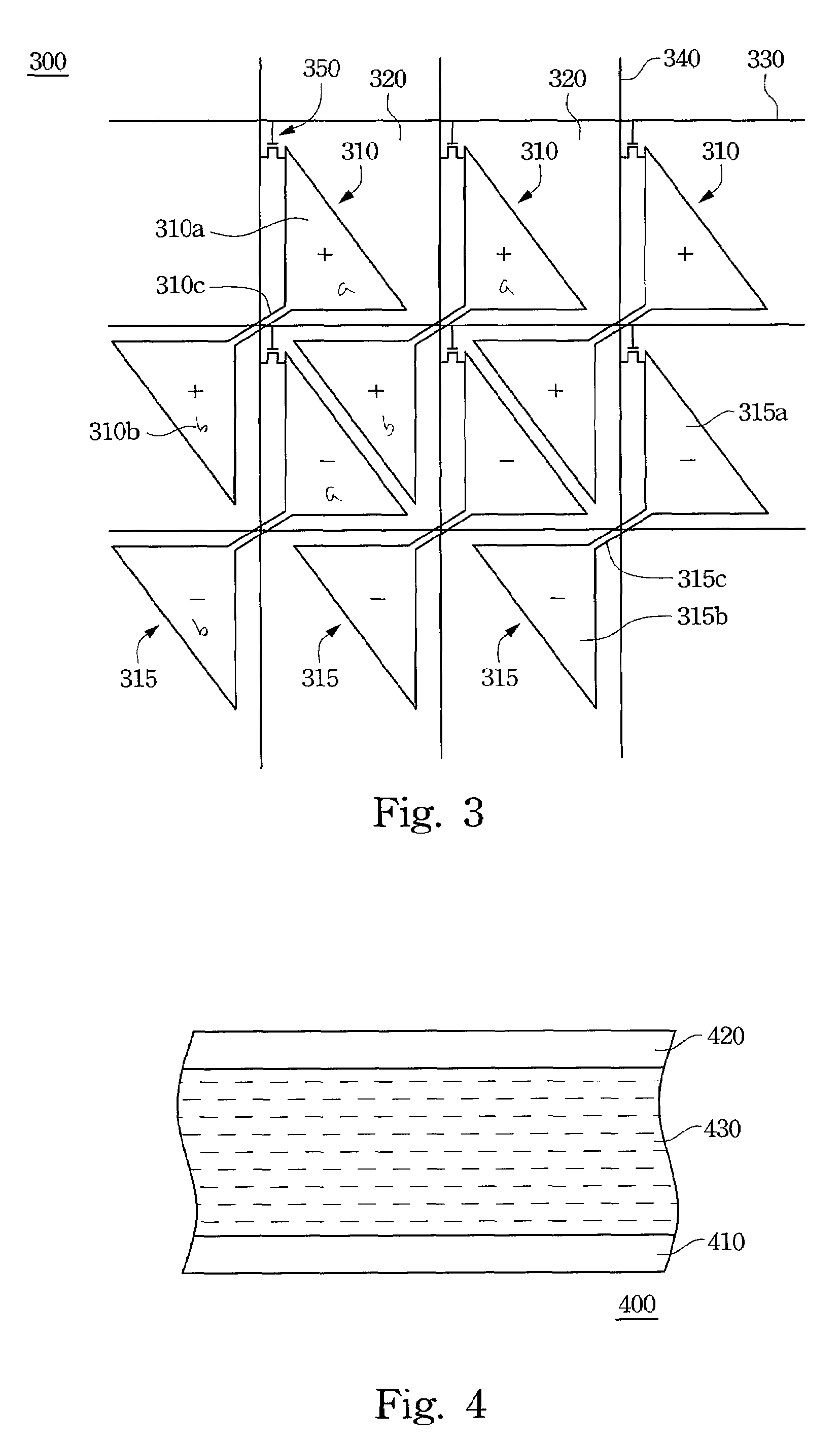Liquid Crystal Display
- Summary
- Abstract
- Description
- Claims
- Application Information
AI Technical Summary
Benefits of technology
Problems solved by technology
Method used
Image
Examples
embodiment 1
[0020]FIG. 1 illustrates the pixel array of an LCD according to an embodiment of the invention. The pixel array 100 comprises pixel electrodes 110 and 115. The pixel electrode 110 comprises two sub-pixel electrodes 110a and 110b. The sub-pixel electrodes 110a, 110b are formed in two neighboring pixel areas 120 sharing an edge and diagonally connected to each other through a connecting part 110c. Similarly, pixel electrode 115 comprises two sub-pixel electrodes 115a and 115b. The sub-pixel electrodes 115a and 115b are formed in two neighboring pixel areas 120 sharing an edge and diagonally connected to each other through a connecting part 115c. Therefore, a repeating unit of the pattern formed by the first sub-pixel electrodes 110a, 110b and the second sub-pixel electrodes 115a, 115b is two first sub-pixel electrodes 110a, 110b in the two diagonal areas of a parallelogram and two second sub-pixel electrodes 115a, 115b in the other two diagonal areas of the parallelogram.
[0021]Each of...
embodiment 2
[0023]FIG. 2 illustrates the pixel array of an LCD according to another embodiment of the invention. FIG. 2 shows that pixel array 200 is composed of pixel electrodes 210 and 215. The pixel electrode 210 is divided into three sub-pixel electrodes 210a, 210b, and 210c. The sub-pixel electrodes 210a, 210b, and 210c are formed in the two neighboring pixel areas 220 sharing an edge. The sub-pixel electrode 210b is diagonally connected to the sub-pixel electrodes 210a and 210c through connecting parts 210d and 210e. Similarly, the pixel electrode 215 is divided into three sub-pixel electrodes 215a, 215b, and 215c. The sub-pixel electrodes 215a, 215b, and 215c are formed in the two neighboring pixel areas 22 sharing an edge. The sub-pixel electrode 215b is diagonally connected to sub-pixel electrodes 215a and 215c through connecting parts 215d and 215e. Therefore, a repeating unit of the pattern formed by, for example, the first sub-pixel electrodes 210a, 110b and the second sub-pixel ele...
embodiment 3
[0026]FIG. 3 illustrates the pixel array of an LCD according to another embodiment of the invention. The pixel array 300 is composed of pixel electrodes 310 and 315. The pixel electrode 310 is divided into two sub-pixel electrodes 310a and 310b located in two pixel areas 320 sharing a corner. The sub-pixel electrodes 310a and 310b are connected to each other through a connecting part 310c. Similarly, pixel electrode 315 comprises two sub-pixel electrodes 315a, 315b located in two pixel areas 320 sharing a corner. The sub-pixel electrodes 315a and 315b are connected to each other through a connecting part 315c. Therefore, a repeating unit of a pattern formed by the first sub-pixel electrodes 310a, 310b and the second sub-pixel electrodes 315a, 315b is two first sub-pixel electrodes 310a, 310b located in the two opposite edges of a parallelogram and two second sub-pixel electrodes 315a, 315b located in the other two opposite edges of the parallelogram.
[0027]The above mentioned pixel a...
PUM
 Login to View More
Login to View More Abstract
Description
Claims
Application Information
 Login to View More
Login to View More - R&D
- Intellectual Property
- Life Sciences
- Materials
- Tech Scout
- Unparalleled Data Quality
- Higher Quality Content
- 60% Fewer Hallucinations
Browse by: Latest US Patents, China's latest patents, Technical Efficacy Thesaurus, Application Domain, Technology Topic, Popular Technical Reports.
© 2025 PatSnap. All rights reserved.Legal|Privacy policy|Modern Slavery Act Transparency Statement|Sitemap|About US| Contact US: help@patsnap.com



